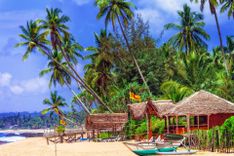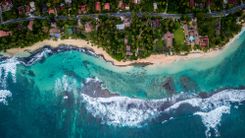The principal attraction is, of course, elephants, of which there are usually around six hundred in the park; animals are free to migrate along an elephant corridor between here and Lunugamvehera National Park, though most stay here. There are also hundreds of buffaloes, plus macaque and langur monkeys, spotted and sambhur deer and crocodiles, while other rarely sighted residents include leopards, giant flying squirrels, jungle cats, sloth bears and porcupines. Uda Walawe is also good for birds, including a number of endemics and some birds of prey, while the reservoir also attracts a wide range of aquatic birds including the unmistakable Lesser Adjutant, Sri Lanka’s largest – and ugliest – bird, standing at well over a metre tall.
If you're planning a trip to Sri Lanka, don't miss our Sri Lanka itineraries and information on how to get there.
Elephant transit home
About 5km west of the park entrance on the main road is the engaging Elephant Transit Home – usually referred to as the “Elephant Orphanage”. Founded in 1995, the orphanage is home to around 25 baby elephants rescued from the wild after the loss of their parents. As at the better-known orphanage at Pinnewala, elephants here are bottle-fed milk until the age of 3½, after which they’re given a diet of grass. At the age of 5, most are released into the national park (around thirty so far); a few have been donated to important temples. You can’t get quite as close to the elephants as at Pinnewala; outside feeding times the elephants are allowed to wander, so there’s usually nothing to see.
Want to learn even more useful information for your upcoming trip to Sri Lanka? Read our travel tips for travelling to Sri Lanka.






